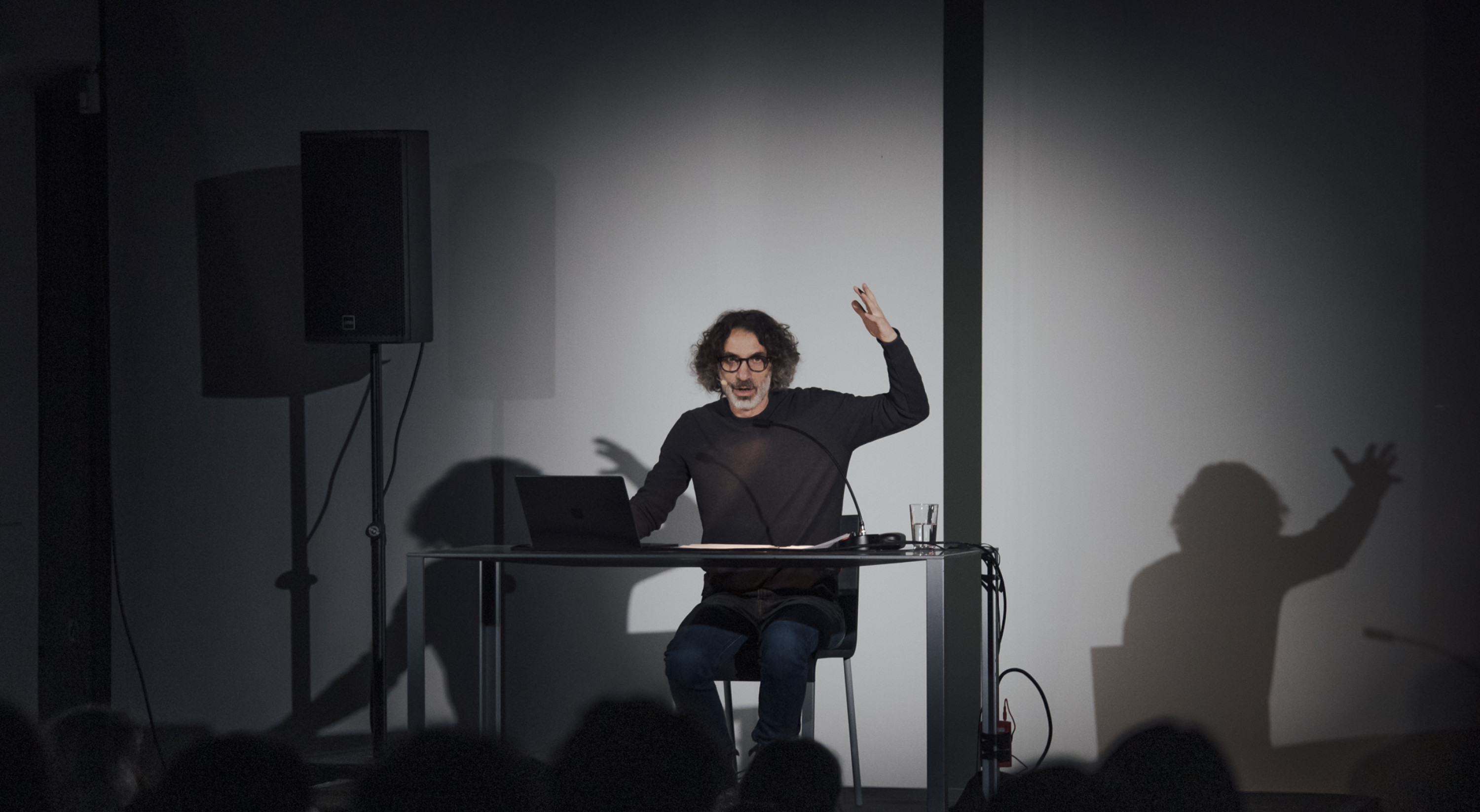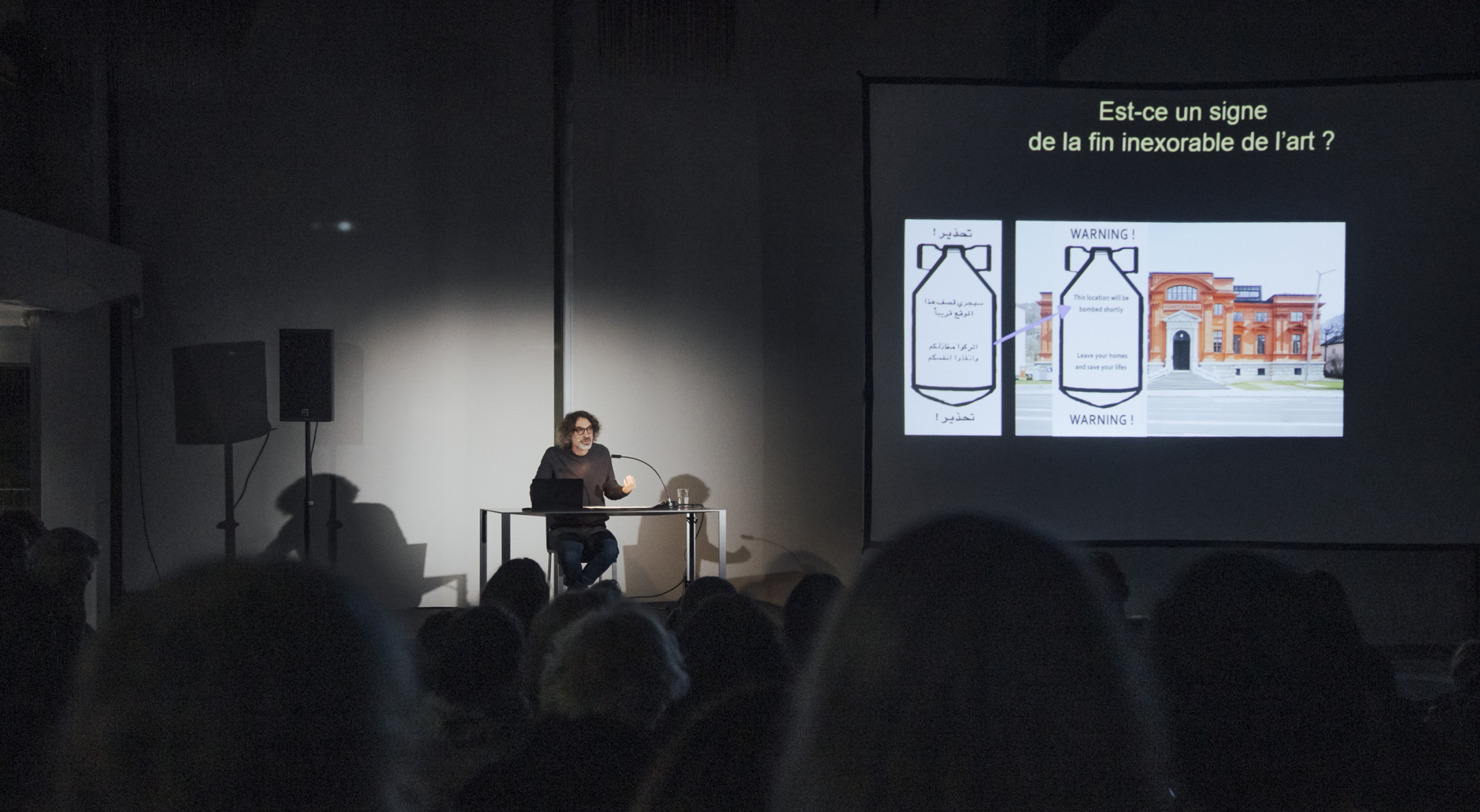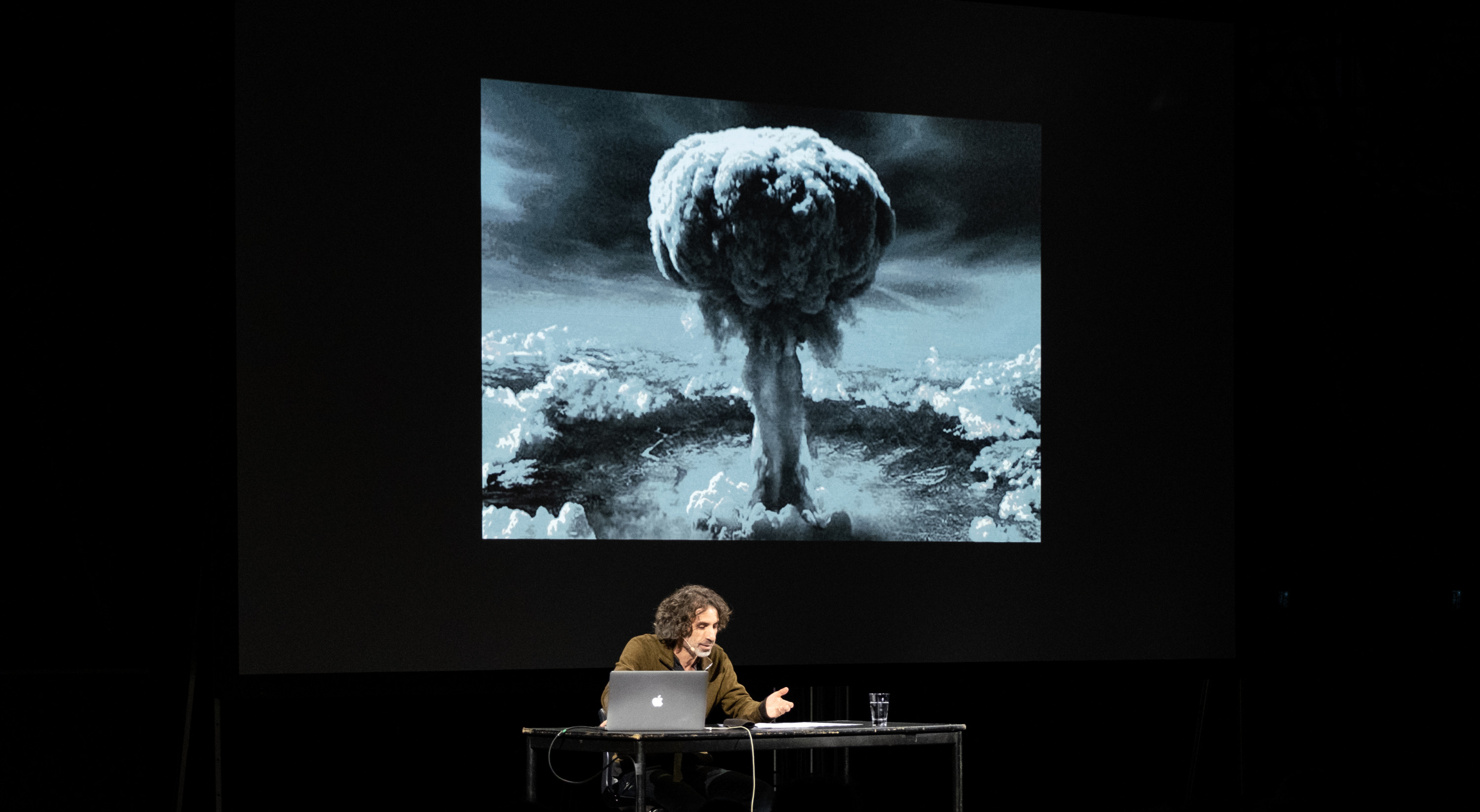Rabih Mroué
Before Falling Seek the Assistance of Your Cane
novembernov 18
Monday november 18
19h30
A non-academic lecture by Rabih Mroué
In partnership with L'Orient Le Jour
The Fondation Cartier pour l'art contemporain and the Festival d'Automne à Paris present this programme in co-production.
The Lina Majdalanie and Rabih Mroué duo presents two “non-academic conferences” and a concert-performance in collaboration with Rima Khcheich.
In Before Falling Seek the Assistance of Your Cane (2022), Rabih Mroué questions the nature of works of art in the public space, and in particular those instances when the object in question finds itself in direct contact with the real. Thus, a leaflet dropped into the air by a military plane warning of an imminent bombing, and which is presented in an exhibition, might result in the venue being evacuated by the police.
Interview with Lina Majdalanie & Rabih Mroué
In the same place



